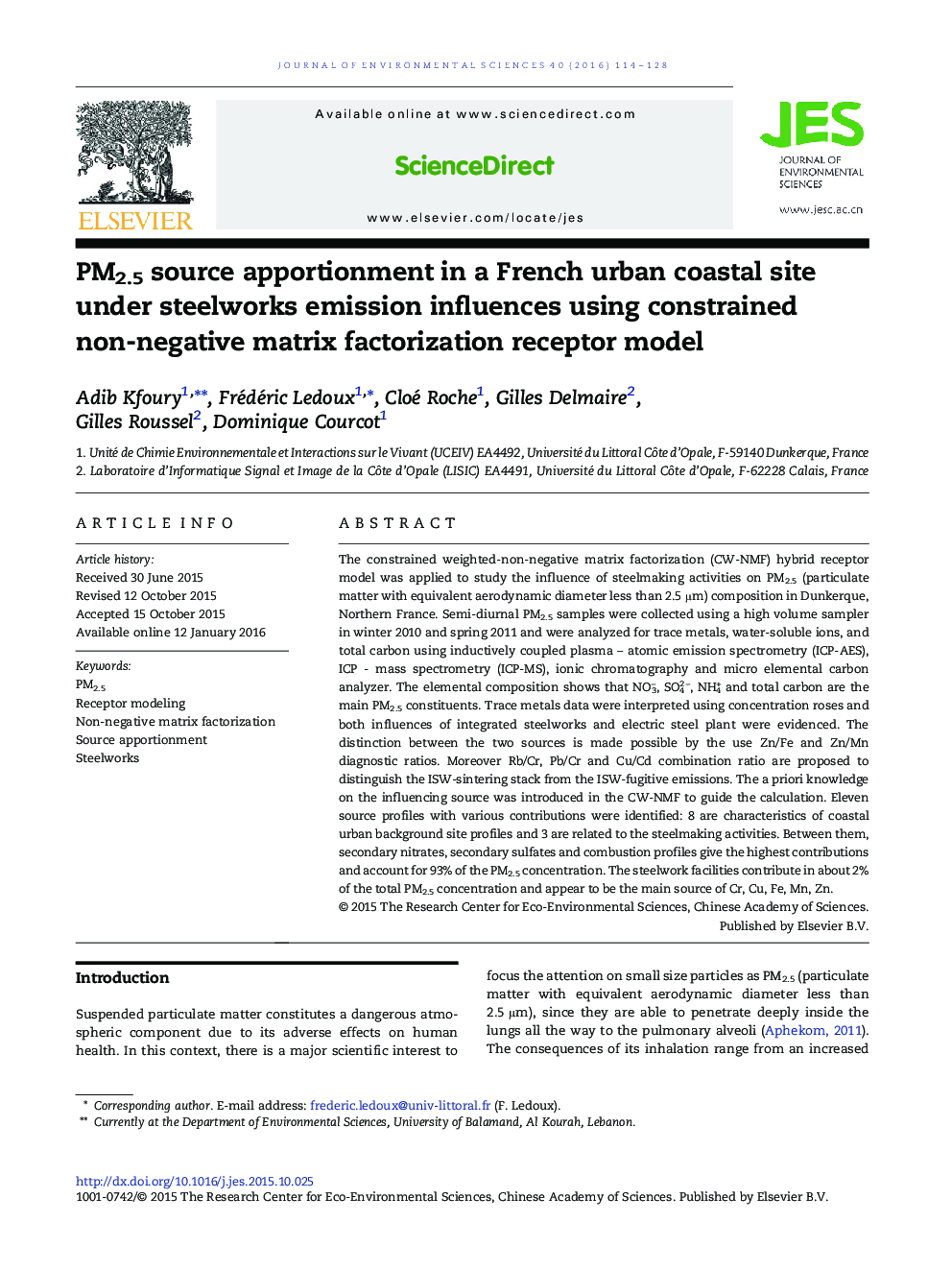| Article ID | Journal | Published Year | Pages | File Type |
|---|---|---|---|---|
| 4453832 | Journal of Environmental Sciences | 2016 | 15 Pages |
The constrained weighted-non-negative matrix factorization (CW-NMF) hybrid receptor model was applied to study the influence of steelmaking activities on PM2.5 (particulate matter with equivalent aerodynamic diameter less than 2.5 μm) composition in Dunkerque, Northern France. Semi-diurnal PM2.5 samples were collected using a high volume sampler in winter 2010 and spring 2011 and were analyzed for trace metals, water-soluble ions, and total carbon using inductively coupled plasma – atomic emission spectrometry (ICP-AES), ICP - mass spectrometry (ICP-MS), ionic chromatography and micro elemental carbon analyzer. The elemental composition shows that NO3−, SO42 −, NH4+ and total carbon are the main PM2.5 constituents. Trace metals data were interpreted using concentration roses and both influences of integrated steelworks and electric steel plant were evidenced. The distinction between the two sources is made possible by the use Zn/Fe and Zn/Mn diagnostic ratios. Moreover Rb/Cr, Pb/Cr and Cu/Cd combination ratio are proposed to distinguish the ISW-sintering stack from the ISW-fugitive emissions. The a priori knowledge on the influencing source was introduced in the CW-NMF to guide the calculation. Eleven source profiles with various contributions were identified: 8 are characteristics of coastal urban background site profiles and 3 are related to the steelmaking activities. Between them, secondary nitrates, secondary sulfates and combustion profiles give the highest contributions and account for 93% of the PM2.5 concentration. The steelwork facilities contribute in about 2% of the total PM2.5 concentration and appear to be the main source of Cr, Cu, Fe, Mn, Zn.
Graphical abstractFigure optionsDownload full-size imageDownload as PowerPoint slide
